Check the ingredients!
... live healthy!


| "Descrizione" by Whiz35 (11828 pt) | 2022-Dec-20 15:45 |
| Evaluation | N. Experts | Evaluation | N. Experts |
|---|---|---|---|
| 1 | 6 | ||
| 2 | 7 | ||
| 3 | 8 | ||
| 4 | 9 | ||
| 5 | 10 |
Nonoic acid (Pelargonic acid) is a natural, medium-chain, nine-carbon-atom saturated fatty acid found in edible plants, in the exometabolome of the tomato, in some rhododendrons (Rhododendron mucronulatum), in buttercups (Staphisagria macrosperma), in plants of the Malvaceae family, and in animals.

It appears as a colourless oily liquid insoluble in water, soluble in ether, ethanol and chloroform.
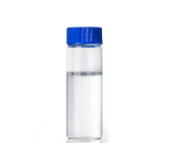
What it is used for and where
Cosmetics
Pelargonic acid and its esters act as fairly safe and non-toxic skin-conditioning agents, but skin penetration is possible. They have proven to be non-irritating and non-sensitising to human skin in laboratory tests, but some formulations may improve penetration into the stratum corneum.
Surfactant - Cleansing agent
Cosmetic products used to cleanse the skin utilise the surface-active action that produces a lowering of the surface tension of the stratum corneum, facilitating the removal of dirt and impurities.
Surfactant - Emulsifying agent
Emulsions are thermodynamically unstable. Emulsifiers have the property to reduce the oil/water or water/oil interfacial tension, improve emulsion stability and also directly influence the stability, sensory properties and surface tension of sunscreens by modulating their filmometric performance.
Medical
A commonly recognised safe antifungal agent and disinfectant (GRAS), it also possesses antimicrobial activity (1) and is used as an aqueous antimicrobial treatment to preserve fresh produce including the possible internalisation of pathogens by plant tissue (2). It is registered with the EPA (3).
Food
Fragrance. Used in the preparation of coconut and berry flavours. FDA-approved food additive. Credited with antimicrobial properties
Other uses
Together with other chemicals, such as glyphosate (Roundup) it is an ingredient in herbicide formulations, herbicides.
Synthetic lubricant, plasticiser, paint dryer.
Safety
It has not demonstrated toxicity to humans at low quantities.
The most relevant studies on this acid have been selected with a summary of the contents:
Caratteristiche tipiche del prodotto commerciale Pelargonic acid
| Appearance | Colorless oily liquid |
| Boiling Point | 269°C 516.20°F litre |
| Melting Point | 9°C 48.20°F litre |
| Flash Point | 100°C 212°F |
| Density | 0.906 g/mL at 25°C |
| Refraction Index | n20/D 1.432(lit.) |
| Vapor Pressure | <0.1 mm Hg at 20°C |
| Vapor density | 5.5 |
| PSA | 37.30000 |
| LogP | 2.82160 |
| Purity | ≥99% |
| Water | ≤0.5% |
| Total acid | 97.5%-100% |
| Acid value | 345.00-355.00 mg KOH/g |
| Iodine value | 0.00-0.50 gl2/100g |
| Iron | 0-2 ppm |
| Transmittance | 95-100% 440nm |
| Transmittance | 99-100% 5500nm |
| Storage | 2-8°C |
| Shelf Life | 2 years |
| Chemical Safety | 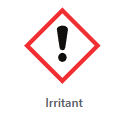 |
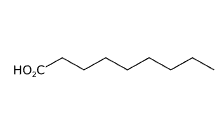 | 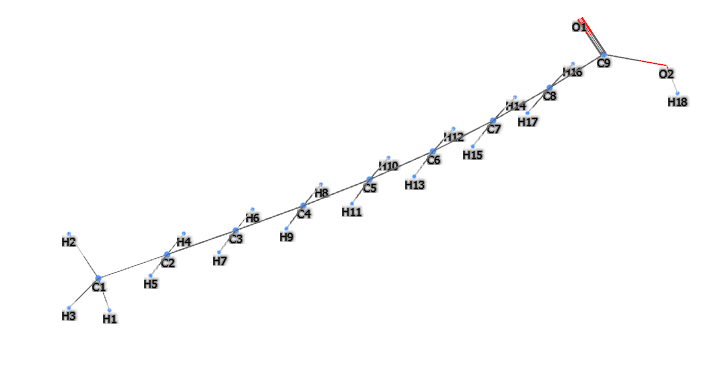 |
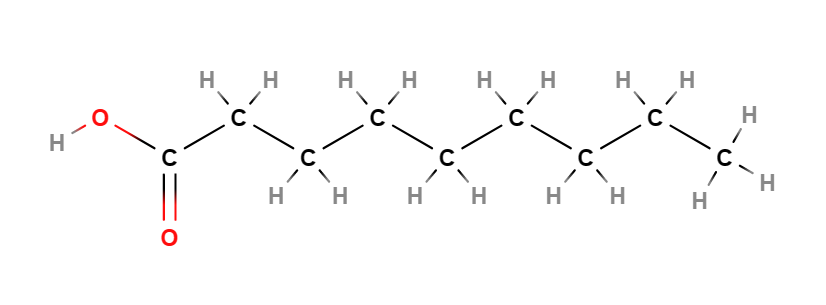 | 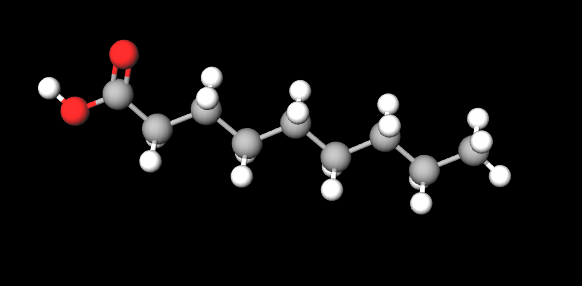 |
Synonyms
References_____________________________________________________________________
(1) Dev Kumar G, Mis Solval K, Mishra A, Macarisin D. Antimicrobial Efficacy of Pelargonic Acid Micelles against Salmonella varies by Surfactant, Serotype and Stress Response. Sci Rep. 2020 Jun 24;10(1):10287. doi: 10.1038/s41598-020-67223-y.
(2) Herdt J., Feng H. Aqueous antimicrobial treatments to improve fresh and fresh-cut produce safety. In: Fan X., Niemira B.A., Doona C.J., Feeherry F.E., Gravani R.B., editors. Microbial Safety of Fresh Produce. Blackwell Publishing and the Institute of Food Technologists; Ames, IA, USA: 2009. pp. 169–190.
(3) Biopesticides Fact Sheet for Pelargonic acid (epa.gov)
| Evaluate |